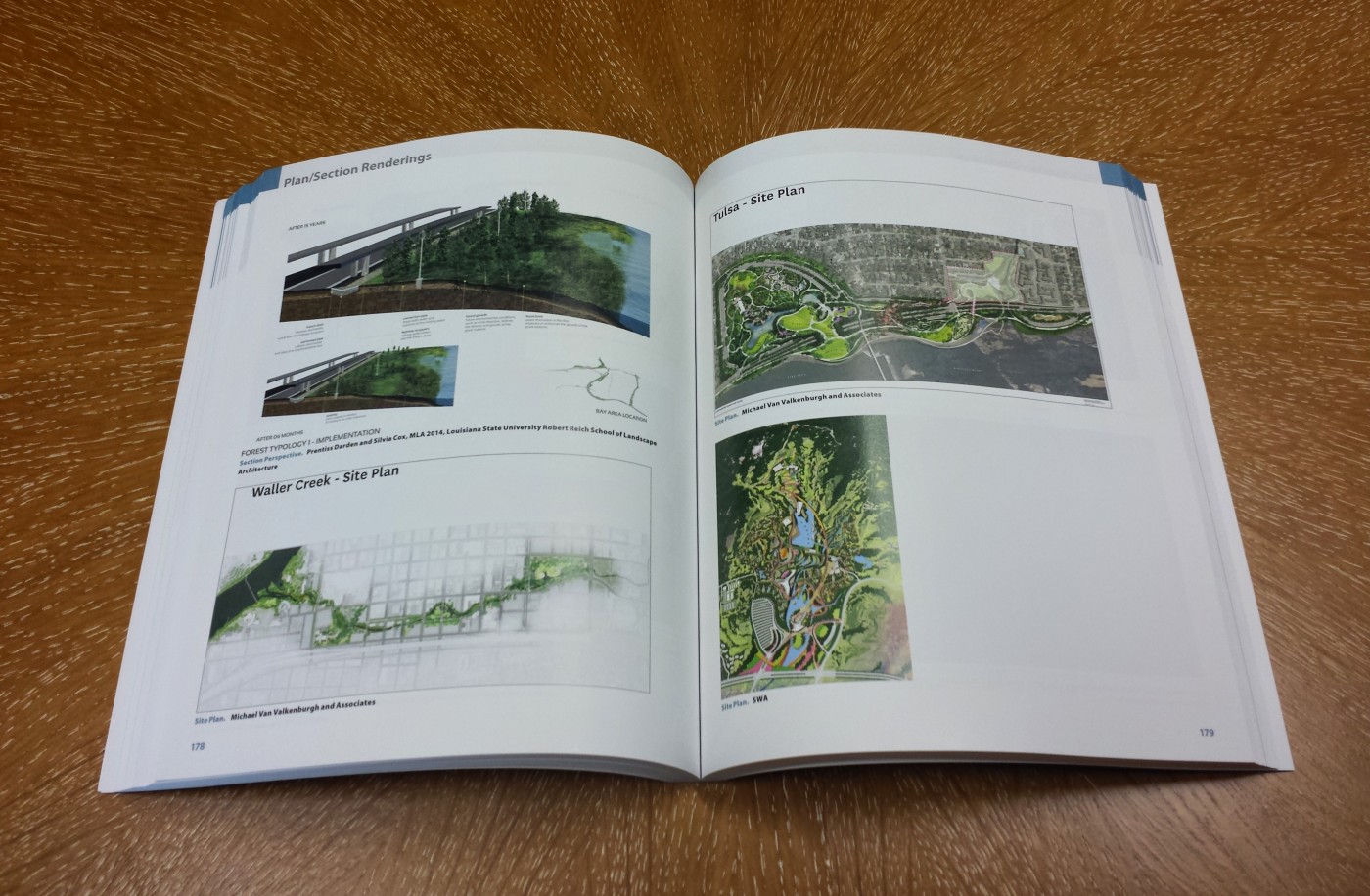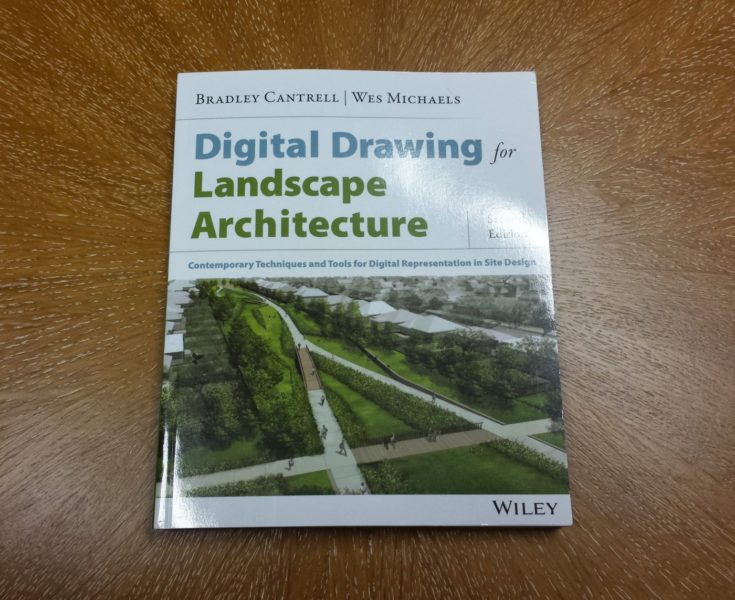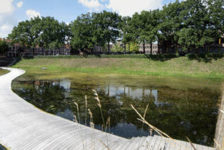The advent of the digital age has long been upon us. For most practices, this has created an interesting mix of skill sets within an office. Recent graduates have a great handle on the most current programs while those that have been in the industry for a little longer are finding themselves playing catch up. More often than not, a general amount of knowledge and appreciation is present, but the ability to produce the most striking of visuals is usually not there. Digital Drawing for Landscape Architecture is a comprehensive presentation of easy to follow tutorials and guides to help the digitally aware become the digitally adept.

Digital Drawing is the most recent offering by Bradley Cantrell and Wes Michaels. Bradley has been
featured here on Land8 in 2013 as the recent winner of the Rome Prize Fellowship. The book is not best for those that are just starting out with the programs that the industry uses everyday. However, if you are versed enough recognize some of the tools that are in play, this book can take you to the next level. In a world where everyone is going digital, there is a subtle difference between a computer drawing and a finely tuned illustrative rendering. Understanding what it takes to elevate your techniques is crucial to having your work stand out amongst the others.
The second edition of this ASLA award winning book includes over 50 new examples and has updated all graphics to be aligned with the most up to date applications. When first published in 2012,
Digital Drawing won an national
ASLA Award of Excellence because of its ability to “bridge analog and digital landscape representation techniques” as well as “provide context for how we use digital media as designers and landscape architects.”
Digital Drawing does an excellent job of stressing the important things about this form of graphic making – flexibility is key. You can achieve the same result a multitude of ways, however, your ability to adjust a graphic quickly down the road will vastly improve the efficiency of your overall project.

Some highlights include Chapter 3 which explores the basic concepts of digital rendering. Though these are introductory – they still can be complicated for a beginner designer. The authors provide a great refresher for even the studio weary rendering specialist. If you are anything like me, then you picked up how to use Photoshop and Illustrator on your own through experimentation (read: frustration).
Digital Drawing takes you back through the basics to remind you of the simple things that you may have never picked up. Do you remember the subtle difference between opacity and fill or perhaps the merits of different masks and when to use each?
Some of the most seemingly mundane tasks that are part of a graphic’s construction are given entire chapters in Digital Drawing – and for good reason. Chapter 8 gives some quick but extremely useful directives for managing large files while Chapter 18 is 10+ pages on importing PDF line work. I believe that getting these mandatory techniques correct is very important because it sets the tone for the rest of your work on a given product. Better layer management, for instance, can be the difference between a quick, last minute edit and a sluggish, deadline missing revision.

Ultimately, Digital Drawing is an excellent resource for students, entry level designers, and those looking to refine their graphic skills for actual workplace applications. Even a person who believes themselves to be well versed in the ways of Photoshop, Illustrator, etc, such as myself, can find a ton of useful time saving tricks and refined techniques to make their workflow more efficient.
Looking for other great resources for your design library?
Head over to our resource section where we have curated a collection of essential Landscape Architecture Books >>
About the Authors:
Bradley Cantrell is Principal of Visual Logic and Associate Professor of Architectural Technology at the Harvard Graduate School of Design. Bradley has been
interviewed here on Land8 in 2013 as the recent winner of the Rome Prize Fellowship.
WES MICHAELS is a Principal at Spackman Mossop Michaels Landscape Architecture and an Associate Professor of Landscape Architecture at Louisiana State University.
Benjamin Boyd is a licensed landscape architect working Baltimore, Maryland and is a proud graduate of the University of Florida School of Landscape Architecture. He also writes at Landscape Invocation.















Andrew Spiering
Excellent review! Would you say these techniques apply to both small and large scale projects?
Brandon Reed, CVO, ASLA / Rooftop and Urban Designer / Landscape Architect
I just ordered this book! I am excited to use it in my current practice!
Thanks for sharing!
Jason Packenham
Ben – great review. I have the first edition of this book and it’s fantastic! I’ve been telling my students to get it for the last few years so it’s great to see a second revision with new content.
Sean Passler
Andrew,
These techniques described in the book certainly apply to both large and small scale projects. However, the use of them depends on what makes sense for the particular project being developed. For example, depending of what you are trying to accomplish will depend on the software and techniques used. It is also important to maintain a workflow that can easily be editable through out the project.
J. Robert (Bob) Wainner
Interesting LA publication…..but, it’s just my opinion that James Richards’ book “Freehand Drawing & Discovery” is a better tool for young Landscape Architects. It seems to me, that most young LAs have a fairly good grasp of “computer generated drawings”…..but, don’t have a very good grasp of “freehand drawing” skills. Freehand drawings as illustrated in Mr. Richards’ book are among the most outstanding I’ve seen in my 35+ LA career. His style & high quality would be an extremely beneficial skill to have…whether an LA is onboard a small or large LA firm…or even a freelance LA working on his/her own. This book is available on Amazon.com…I highly recommend it.